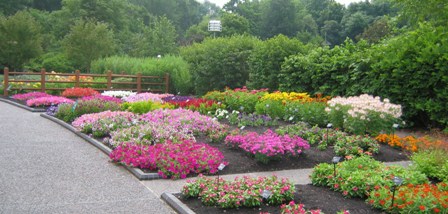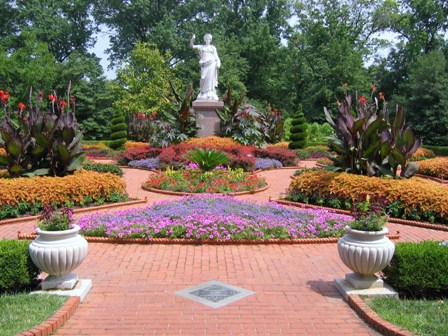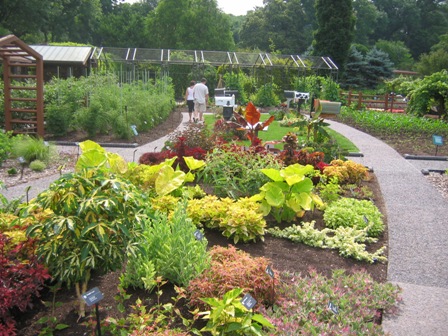
Lois Whiteside Franklin Flower Trial Garden
The Missouri Botanical Garden (MBG) will celebrate its 150th anniversary this year, making it the oldest botanical garden in continuous operation in the nation. I’d like to mark the occasion with an informational post.
According to the MBG web site, the garden was created by prominent St. Louis businessman Henry Shaw with guidance from eminent botanist Dr. George Engelmann. Shaw’s native England was the inspiration for the garden, originally a treeless prairie far outside the city. Shaw intended his garden to be a center for education, scientific research and horticultural display. Today the MBG is a National Historic Landmark and maintains one of the world’s leading programs in botanical research.
I am a frequent visitor to the Garden. As a designer, I feel incredibly fortunate to have such a valuable resource at my disposal year round. I enjoy wandering the 79 acres, exploring the many international and themed gardens.

MBG boasts the largest traditional Japanese strolling garden in North America, covering 14 acres, including a 4 ½ acre lake. In early summer, the Gladney Rose Garden is one of my favorite haunts, with over one hundred varieties of hybrid tea and floribunda roses.
During the winter months the lush green foliage and high humidity of the Climatron® are welcoming. The conservatory is a geodesic domed structure covering over a half-acre; inspired by the design of R. Buckminster Fuller.

Kresko Family Victorian Garden
Sculpture plays a prominent role at the Gardens. There is an extensive permanent collection as well as seasonal exhibitions. Recently, Dale Chihuly’s glass sculptures were on exhibit. Last year, forty massive pop-art mosaic and painted sculptures by the late Niki de Saint Phalle were placed throughout the Garden.
On Wednesday evenings June through August the Garden is alive with music. We pack a picnic and enjoy the Whitaker Jazz Festival. I can’t imagine a better music venue!

Justin & Rose Naumann Experimental Garden
If I had to choose just one, my favorite resource at the Garden would have to be the Kemper Center for Home Gardening. The Center sprawls over 8.5 acres with 23 demonstration gardens. I always find inspiring planting combinations in the Experimental Garden. It is my understanding the monochromatic vignettes in the photograph above were designed by an intern. Follow the link to see the mature plantings.
According to the MBG web site, the Center offers soil testing, educational classes, plastic pot recycling, and Plant of Merit program and to name a few.
Volunteer Master Gardeners staff the Plant Doctor desk to diagnose plant problems and provide treatment recommendation and man a horticultural answer service providing personalized answers to specific phone-in gardening questions.
Have you used the PlantFinder? I suspect you may have, without even knowing it. Just for fun try ‘Googling’ Pennisetum. Pennisetum alopecuroides ‘Hameln’ appears as number five on my search and links to http://www.mobot.org/gardeninghelp/plantfinder/Plant.asp?code=A680. The service contains information on 4,000+ plants currently growing or that have been grown in the demonstration gardens at the Kemper Center.
This post highlights a few of the many wonderful features of the MBG and the Kemper Center for Home Gardening. I haven’t even touched on the research being carried out. Spend some time on the MBG web site (you’ll find much better photos than I have on file). And, if you find you’ll be in St. Louis, plan for a day at the Garden!
